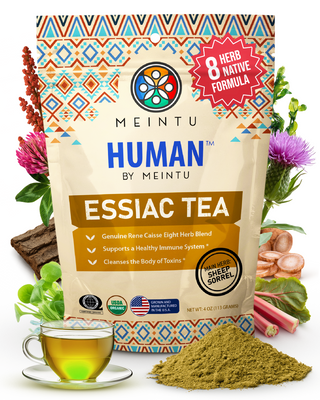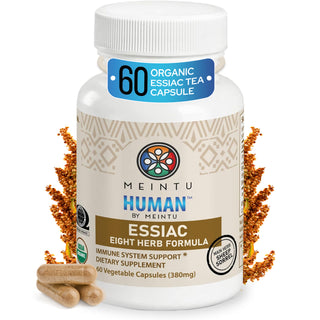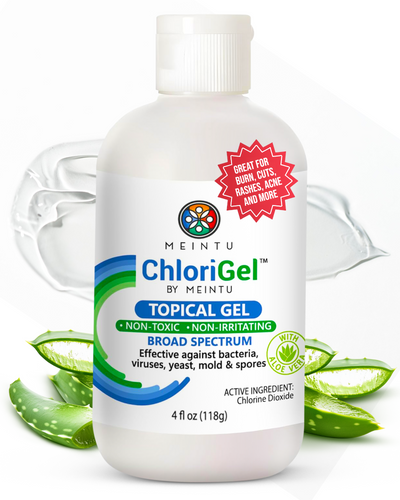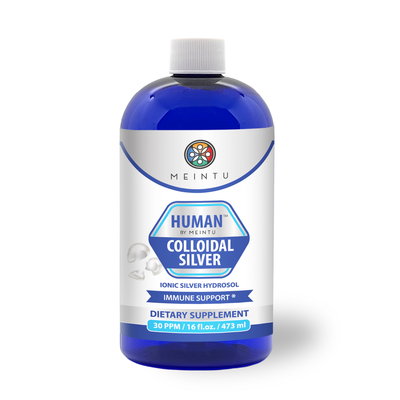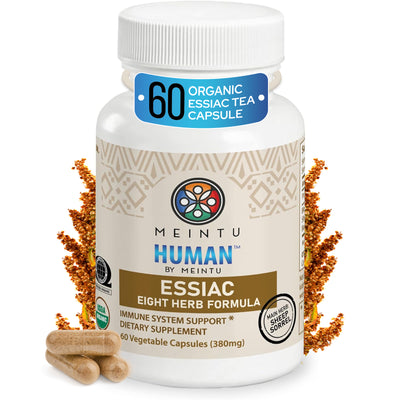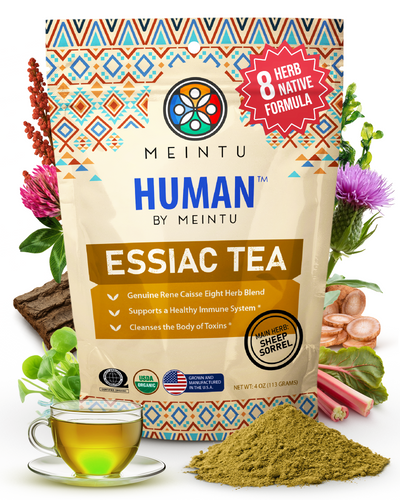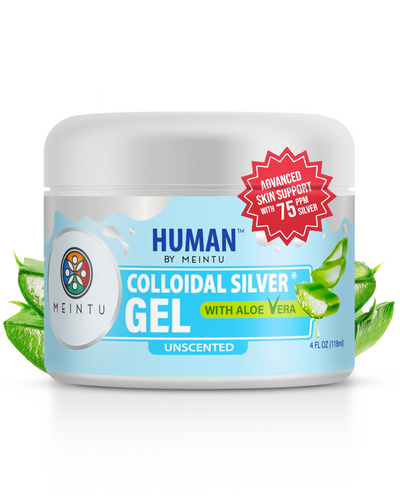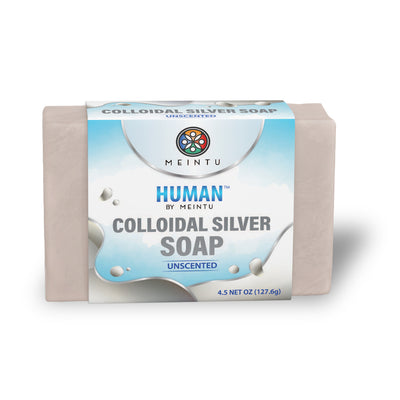See Clearly: Why Your Eyes Deserve a Holistic Check-In
Your eyes are, quite literally, your window on the world. But in our digital age—screens, bright lights, stress, poor sleep—they get a heavy load. If you’ve been noticing fatigue, dryness, blurred focus or simply want to support long-term visual health, it pays to look both at clinical care and healthy everyday habits.
In the video above, the presenter (a clinician/health educator) shares their personal experience of being diagnosed with both glaucoma and cataracts, then dives into how castor oil + DMSO eye drops became part of their journey. While this is anecdotal, the broader themes he raises give us valuable take-aways for how to care for our eyes holistically. Let’s summarise those key topics — and then we’ll explore how a specific product might fit into a self-care toolbox (with the usual note: this is not a substitute for medical advice).
1. Understanding the Foundations: Eye Structure & Stressors
The video starts by reminding us that eyes are delicate organs with many moving parts—cornea, lens, retina, optic nerve—and that many factors can accelerate wear or compromise function:
• Excessive screen time and blue light exposure.
• Lack of sleep, poor circulation, inflammation.
• Oxidative stress and poor nutrient supply.
• Conditions like glaucoma (elevated pressure) or cataracts (clouding lens) that require medical oversight. Indeed, the presenter was diagnosed with both.
• Dry-eye or tear-film instability (common in heavy screen users).
The takeaway: no matter if you currently have eye disease or not, building resilience in your ocular system matters. That means looking beyond the lens (pun intended) of just glasses or surgery.
2. Lifestyle Matters: Habits That Protect Your Vision
From the video and extended commentary, several lifestyle-oriented habits stand out as key for eye health:
• Screen breaks & proper ergonomics: Frequent blinking, the 20-20-20 rule (every 20 minutes look at something 20 feet away for 20 seconds) help reduce strain.
• Sleep & circulation: The eyes rely on healthy blood flow and lymphatic drainage. Poor sleep, heavy fatigue or chronic tension (neck/shoulders) can hamper that.
• Nutrition & antioxidants: The presenter emphasizes the role of nutrient-rich foods (leafy greens, carotenoids like lutein/zeaxanthin, omega-3s) in supporting retinal and macular integrity.
• Hydration & tear-film support: Eye dryness or poor lubrication can set the scene for more major issues. He mentions that castor oil based drops are one of the adjunctive strategies he turned to.
• Early monitoring & professional care: He stresses that despite exploring holistic supports, he did not abandon the ophthalmologist visits or the standard of care needed for glaucoma/cataracts. Holistic supports are complementary, not replacements.
In short: You build eye-health like you build general wellness. It’s layered—environment, habits, nutrition, support—and the earlier you start (or maintain) the better.
3. Castor Oil & DMSO: The Eye Drop Angle
Here we get to the part of the video that connects most directly to the product: the combination of castor oil + DMSO (dimethyl sulfoxide) for eye health.
What the video conveys:
• The presenter had castor oil on hand (organic) and pharmaceutical grade DMSO. He describes using a blend as a topical (and in some cases ocular) intervention to assist circulation, reduce inflammation/irritation, and assist lubrication/comfort in the eye area.
• The idea: Castor oil has long been used as a holistic remedy for various eye conditions such as dryness, tear-film deficiency, mild irritation. DMSO is presented as a potent “carrier” and absorption enhancer that might assist deeper penetration (though with caution).
• He emphasises the need for clean, high-quality (organic, cold-pressed, hexane-free) castor oil, and pharmaceutical-grade DMSO—proper sourcing, purity, and safe usage are repeated themes.
• He also cautions that this is an adjunct approach: you still need professional evaluation/monitoring, especially in serious eye conditions (cataracts/glaucoma).
What we know from broader sources:
• Some sources note that castor oil eye drops have been used to support tear-film lipid layer integrity in some mild dry‐eye or tear film deficiency cases.
• However, major professional bodies (e.g., American Academy of Ophthalmology) caution that many “viral” eye-remedy claims (e.g., “cures cataracts/floaters”) are unsupported by robust evidence.
• Thus, the video’s messaging aligns with a moderate stance: holistic support may help comfort, maintenance, but isn’t a stand-alone cure of serious eye disease.
Key take-away from this section:
If you’re exploring holistic support for your eye health, the castor oil + DMSO combination can be part of a broader self-care strategy. But you must:
• Choose high-quality, clean ingredients.
• Use them safely, under guidance (especially if applying near or in the eye).
• Continue standard eye-care practices (regular check-ups, manage systemic health).
• Recognise limitations: It’s support, not miracle cure.
4. Holistic Eye Health: Putting It All Together
From the video’s themes plus external context, here are some practical, actionable steps you can incorporate:
• Regular check-ups: If you have glaucoma, cataracts, macular degeneration risks—get scheduled exams, imaging, pressure checks.
• Protect your vision environment: Use correct lighting, screen filters if needed, and ensure breaks.
• Support your circulation & nutrition: Foods rich in lutein/zeaxanthin (e.g., kale, spinach, eggs), omega-3s (fish, flax), and keep your cardiovascular/vascular health in good shape (blood pressure, lipids).
• Manage inflammation: Chronic systemic inflammation (sleep problems, obesity, diabetes) affects eyes too. So holistic lifestyle counts.
• Support lubrication & comfort: Especially for dryness or strain, consider eye-friendly habits (blinking, humidifier, warming compress) and safe adjuncts like castor-oil based drops.
• Consider targeted adjuncts: If you are drawn to natural supports, ensure you pick products that emphasise purity, safe sourcing, minimal additives, and have transparent labeling.
And that brings us to a product that ticks many of those boxes.
5. Introducing the Holistic Support Product
Meet the product from MEINTU:

MEINTU DMSO + Castor Oil Blend – 70% Pure Organic Cold-Pressed Castor Oil & 30% Pharmaceutical Grade DMSO.

MEINTU DMSO + Castor Oil Blend – 70% Pure Organic Cold-Pressed Castor Oil & 30% Pharmaceutical Grade DMSO.
Here’s what makes it stand out:
• The formula comprises 70% cold-pressed USDA organic castor oil and 30% 99.995% pure medical-grade DMSO.
• It is marketed as hexane-free, gluten-free, GMO-free, BPA-free, vegan-friendly, and made in the USA.
• While the product page highlights many potential uses (detox, immune balance, joints, skin), notably it also calls out “Effective Eye Health Support” among its benefits.
• The positioning is holistic: from joint support to skin renewal to eye comfort. This aligns with the video’s message that eye-care isn’t isolated—it’s part of whole-body wellness.
6. How You Might Use It (With Cautions)
If you’re considering this product as part of your holistic eye-care routine, here are some practical thoughts:
• Start small & spot-test: Even though the formula is labelled clean, when applying near the eye region you want to ensure no irritation or sensitivity.
• Use it as adjunct to lubrication: If your eyes are dry or feel fatigued (e.g., after screen time), using a castor oil blend may provide soothing comfort. It may also support the lipid layer of the tear film (as some research into castor oil suggests) though remember: evidence is limited.
• Ensure safety: Because this product includes DMSO (which is a strong solvent and absorption-enhancer) and is marketed for “eye health support,” you’ll want to:
• Confirm with your eye-care provider it is safe for your eye-condition (especially if you have glaucoma, cataracts, post-surgery, contact lenses, etc.).
• Use only where indicated (often outside the eyeball or in the periorbital area rather than “drops” inside the eye unless specifically formulated for that).
• Pair with self-care habits: Use alongside the screen-break rule, good lighting, nutrition, sleep, protection—not instead of them.
• Monitor & evaluate: Keep track of how your eyes feel (comfort, fatigue, dryness, clarity) and have periodic check-ups.
7. Why This Product Makes Sense in This Context
Why does this particular product fit the themes of the video and holistic eye health? Because:
• The video emphasizes quality sourcing (organic castor oil, pharmaceutical grade DMSO) as essential. The product directly states those high-quality claims.
• The video emphasizes adjunctive support rather than miracles; the product is positioned as a “support” (for eye health among other uses) rather than a cure.
• The video emphasizes whole-body connection: eyes don’t operate in isolation. The product markets support for detox, immune balance, joints, skin—reflecting the integrated wellness viewpoint.
• The product emphasizes “Effective Eye Health Support” as one of its benefits. That aligns with the video’s focus.
• The holistic audience drawn by the video (people exploring natural supports, alternatives, self-care) will likely resonate with a product emphasizing organic, vegan, minimal-additive credentials.
8. Potential Drawbacks & Important Caveats
Since we’re doing a balanced view, it’s important to address limitations:
• Evidence base: While castor oil has been used anecdotally for eye lubrication/comfort and some small studies point to benefits, the major eye-care institutions caution about over-claiming.
• Not a replacement: For glaucoma, cataracts, macular degeneration, retinal disease, etc., you need professional monitoring and intervention. The video’s presenter himself states he kept seeing his eye-doctor.
• Product is multi-use: The MEINTU product is marketed for many uses—joints, skin, detox, immune. If you use it for the eye area, ensure you’re confident about the dosage/application, and avoid off-label assumptions.
• Individual variation & safety: Everyone’s eye anatomy, health background, medications differ. What works for one person may not for another. Use caution especially if you’re using other eyedrops, on medications, or have post-surgical eyes.
• Holistic doesn’t mean instant: Supporting eye health often means slow incremental benefit (less dryness, less fatigue) rather than dramatic overnight fix. The video emphasizes this.
9. Putting Together Your 30-Day Eye Support Plan
Let’s imagine a simple plan you could follow starting today—incorporating the insights plus the product (assuming you have the go-ahead from your eye-care professional).
Week 1
• Schedule a baseline: If you haven’t had a recent eye exam (within 12–24 months) and you’re experiencing new changes, book one.
• Introduce the 20-20-20 rule: every 20 minutes of screen time, look at something 20 feet away for 20 seconds.
• At end of day, apply the MEINTU DMSO + Castor Oil Blend around the orbital area (outer corners, under‐eye) after cleaning your face. Use about 2–3 drops, gently massage around the brow bone, infraorbital area. Avoid applying inside the eyeball unless your care provider has instructed it.
• Increase intake of leafy greens, carrots, eggs, flax seeds/omega-3 rich fish.
Week 2
• Add blinking exercises: Pause every hour and consciously blink 10 times slowly (helps tear film).
• Use a warm compress (5 mins) to the eye area before using the castor oil blend (may help circulation according to holistic wisdom).
• Sleep goals: Try for 7–8 hours per night; reduce screen use 30 mins before bed; use a blue-light filter.
• Monitor how your eyes feel: dryness, fatigue, strain, clarity.
Week 3
• If dryness is improved, you can use the castor oil blend as a “maintenance” (maybe every other night) while still using it when strain is high (after heavy screen time or outdoor wear).
• Consider incorporating an omega-3 supplement (if approved by your health-care provider) for retinal and tear-film support.
• Check your neck/shoulder tension—use gentle stretches: the video emphasises circulation & avoiding tension.
• If you use any ophthalmic drops (for glaucoma etc) ensure to separate application times from the oil‐blend (e.g., 15 mins apart) to avoid interference.
Week 4
• Re-evaluate: how do your eyes feel? Less tired? More comfortable? Any symptoms changed?
• Plan a regular habit: Make the castor oil blend a “go-to” tool for when your eyes feel weary (e.g., after reading, travel, screen overload).
• Continue protective habits: screen breaks, proper lighting, nutrition, hydration.
• Keep your next scheduled eye-check in mind. If any worsening signs (vision blurring, new floaters/flashes, pain)—seek professional care immediately.
10. Conclusion: Eye Health as a Journey, Not a Quick Fix
What this video and product combined remind us is that eye health is a journey—it involves prevention, habit, environment, self-care, professional oversight. There are no overnight miracles. But by integrating smart habits, leveraging high-quality supports like the MEINTU DMSO + Castor Oil Blend, and staying consistent, you give yourself the best chance of maintaining comfort, clarity and visual vitality.
If you’re ready to explore that support, you can check out the product here: MEINTU DMSO + Castor Oil Blend.
And if you found the video helpful, you might revisit it for the anecdotal walk-through of using castor oil + DMSO for eye-care: “Introduction to DMSO Castor Oil Eye Drops for Eye Health.”
Important: This article is for educational and promotional purposes only. It does not replace advice from your ophthalmologist or primary care doctor. Especially if you have diagnoses like glaucoma, cataracts, retinal disease, diabetes, hypertension, or if you’re on eye medications—please consult your eye-care professional before using new topical products in or around the eye.
Here’s to clearer, healthier vision—through smart habits, quality supports, and a holistic mindset.













